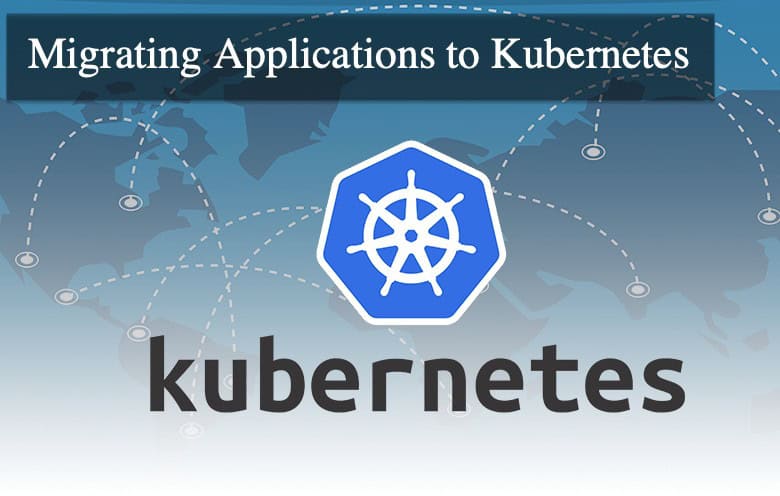
Kubernetes has become the standard for container orchestration. More than 60% of organizations have implemented Kubernetes, and the CNCF annual study showed that the adoption rate has risen to 96%. It abstracts the underlying infrastructure to provide a unified environment for managing applications, enabling developers to focus on building applications rather than managing deployment complexities.
What is Kubernetes?
Kubernetes is an open-source platform developed by Google. Its primary role is to help automate containerized applications’ deployment, scaling, and management. At the heart of Kubernetes is the cluster, which consists of a master node and multiple worker nodes. The master node manages the cluster and includes critical components such as the API Server, Etcd, Scheduler, and Controller Manager.
These components work together seamlessly to provide a robust, scalable, and resilient environment for managing containerized applications. By leveraging these core components, Kubernetes simplifies application deployment and management complexities, enabling organizations to achieve greater agility and efficiency in their software development and operations.
Security and Compliance
One major challenge is the complex security configuration inherent in Kubernetes. With numerous components and settings, it’s easy to make mistakes that could expose clusters to vulnerabilities and unauthorized access.
Data protection is also critical, especially when dealing with sensitive information. Ensuring that persistent storage and secrets are securely managed is essential to prevent unauthorized access. Kubernetes secrets must be encrypted and managed properly to safeguard sensitive data.
Compliance with regulatory frameworks such as GDPR, HIPAA, and PCI DSS adds another layer of complexity. Organizations must ensure that their Kubernetes environments adhere to these regulations to avoid legal penalties and maintain customer trust. This requires meticulous planning and execution to integrate compliance requirements into the Kubernetes setup.
Ensuring team expertise
Kubernetes migration requires a team with a deep understanding of Kubernetes containerization, architecture, and operations. Without the necessary experience, incorrect configurations, security vulnerabilities, and inefficient resource use can negate the benefits of migration.
There are two ways for companies to solve this problem: train their own team or hire Kubernetes consulting company. Both methods have their advantages and disadvantages.
For example, training can take too long, and problems must be solved immediately. Conversely, consultants have well-honed training skills and can offer a fresh perspective on the migration process. Working with a Kubernetes consulting company ensures that your migration follows best practices and utilizes the latest advances in Kubernetes technology. However, hiring a contractor may require a larger budget.
If you do decide to train your employees, start with formal training and certifications, such as those offered by the Cloud Native Computing Foundation (CNCF) with the Certified Kubernetes Administrator (CKA) and Certified Kubernetes Application Developer (CKAD) programs. These certifications ensure team members have a solid foundation of knowledge and practical skills in Kubernetes.
Monitoring and Logging
Traditional monitoring and logging tools may fail to provide the necessary visibility and insight into containerized environments, making it difficult to track performance, diagnose issues, and ensure application health.
One key challenge is the ephemeral nature of containers. Containers can be short-lived, and their logs are often scattered across multiple nodes, making it hard to aggregate and analyze logs efficiently. Additionally, the complexity of microservices architecture can generate a vast amount of telemetry data, which can overwhelm traditional monitoring systems and obscure critical information.
To address these challenges, organizations can implement comprehensive monitoring and logging solutions tailored for Kubernetes. Using tools like Prometheus and Grafana can significantly enhance monitoring capabilities. Prometheus, a powerful open-source monitoring system, collects and stores metrics, while Grafana provides rich visualization dashboards to make sense of the data. Setting up these tools involves:
- Deploy Prometheus: Install Prometheus in the Kubernetes cluster using Helm charts or custom manifests.
- Configure Metrics Collection: Ensure your applications and Kubernetes components expose metrics in a format Prometheus can scrape.
- Visualize with Grafana: Connect Grafana to Prometheus to create dashboards for visualizing metrics.
Containerization and Microservices
Migrating applications to Kubernetes involves embracing containerization and microservices, which presents several challenges. Legacy applications are often monolithic, making it difficult to decompose them into microservices suitable for containers. This transition requires significant refactoring, which can be complex and time-consuming.
Another challenge is ensuring that these newly containerized microservices communicate effectively. Kubernetes’ dynamic environment can complicate service discovery and load balancing, leading to potential issues with inter-service communication and overall application performance.
Organizations should refactor monolithic applications into smaller, independent microservices using patterns like the Strangler Fig for incremental transition. Each microservice should be containerized with Docker, ensuring all dependencies are included in the container images. Kubernetes services and Ingress resources should be utilized for effective service discovery, load balancing, and managing external access.
Application Configuration and Secrets Management
Due to security risks and complexity, traditional methods of storing configuration data and secrets in application code or configuration files are unsuitable for dynamic, containerized environments.
To solve these challenges, Kubernetes provides ConfigMaps and Secrets to handle configuration data and sensitive information separately from the application code. ConfigMaps lets you decouple environment-specific configuration from container images, enabling easier updates and deployment without modifying the container. Secrets offer a secure way to store sensitive data, such as passwords, tokens, and keys, ensuring they are encrypted at rest and in transit.
Final thoughts
Migrating applications to Kubernetes is a transformative process, but it comes with challenges such as security, configuration management, and ensuring team expertise. Despite all this, the benefits of migrating to Kubernetes are substantial. With careful planning and the right resources, organizations can achieve a successful transition, unlocking the full potential of their applications in a modern, cloud-native environment.
Daniel Raymond, a project manager with over 20 years of experience, is the former CEO of a successful software company called Websystems. With a strong background in managing complex projects, he applied his expertise to develop AceProject.com and Bridge24.com, innovative project management tools designed to streamline processes and improve productivity. Throughout his career, Daniel has consistently demonstrated a commitment to excellence and a passion for empowering teams to achieve their goals.